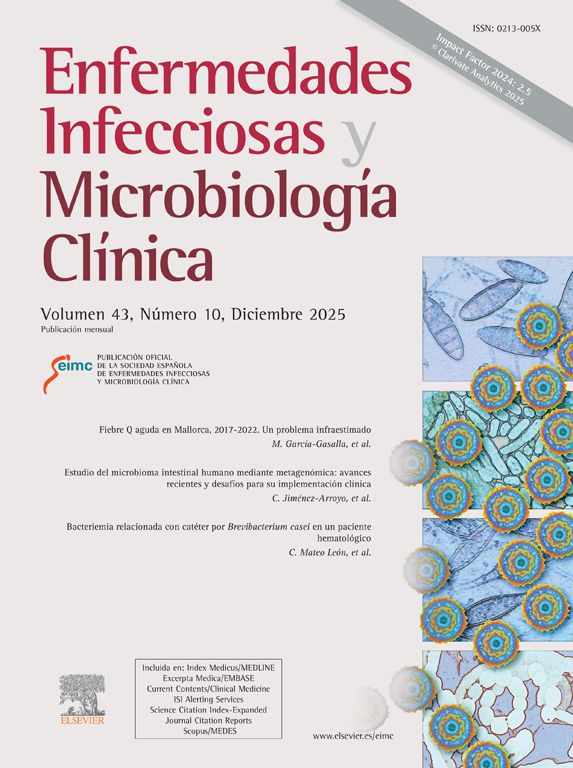Bacteremia caused by gram-positive cocci (GPC) remains challenging, particularly in assessing the risk of infective endocarditis (IE). Various scoring systems have been developed to guide the use of echocardiography. The HANDOC score was specifically designed for non-β-hemolytic streptococci (NBHS). This study aimed to validate the HANDOC score in a cohort across diverse geographic settings.
MethodsA retrospective study enrolled patients with NBHS bacteremia from 2017 to 2021 at two Spanish hospitals. Cases of IE were defined according to European Society of Cardiology 2015 modified Duke criteria. Patient characteristics were extracted from medical records for the analysis of HANDOC score validation in our cohort.
ResultsAmong 280 patients diagnosed with NBHS bacteremia, 31 met the modified Duke criteria for infective endocarditis (11.1%). Using a cutoff of ≥3, the HANDOC score demonstrated a sensitivity of 95%, specificity of 74% and a negative predictive value of 98%. The same metrics were analyzed with an adapted score based on positive blood culture vials, yielding similar results. Time to positivity (TTP) was analyzed with different cutoffs or by each NBHS group showing no statistically significant difference.
ConclusionsThe HANDOC score is a valuable tool for decision-making in NBHS bacteriemia in a Spanish cohort. Scoring by vials may be employed for blood culture item in different clinical settings. Time-to-positivity did not show a significant difference that would justify its potential inclusion in the score.
La bacteriemia causada por cocos grampositivos sigue siendo un desafío para la evaluación del riesgo de endocarditis infecciosa (EI). Se han desarrollado varias escalas de puntuación para guiar el uso de la ecocardiografía. La escala o score HANDOC fue diseñada específicamente para estreptococos no β-hemolíticos (ENBH). Este estudio tiene como objetivo validar el score HANDOC en una cohorte con un emplazamiento geográfico diferente.
MétodosEstudio retrospectivo que incluye a pacientes con bacteriemia por ENBH entre 2017 y 2021 en dos hospitales en España. Los casos de EI se definieron según los criterios modificados de Duke por la Sociedad Europea de Cardiología en 2015. Las características de los pacientes se extrajeron de las historias clínicas para el análisis.
ResultadosDe los 280 pacientes diagnosticados con bacteriemia por ENBH, 31 cumplieron con los criterios de Duke modificados para EI (11,1%). Utilizando un punto de corte de ≥3, el score HANDOC demostró una sensibilidad del 95%, una especificidad del 74% y un valor predictivo negativo del 98%. Se analizaron los mismos valores con una puntuación adaptada en base a viales de hemocultivos positivos, siendo similares. El tiempo de positivización de hemocultivos con diferentes puntos de corte y para cada grupo de estreptococos no demostró diferencias estadísticamente significativas.
ConclusionesEl score HANDOC es una herramienta útil para la toma de decisiones en bacteriemia por ENBH en una cohorte española. La puntuación de los hemocultivos en el score puede adaptarse a diferentes situaciones clínicas. El tiempo de positivización no mostró una diferencia significativa como para valorar de momento una posible introducción en el score.
Artículo
Socio de la Sociedad Española de Enfermedades Infecciosas y Microbiología Clínica

Para acceder a la revista
Es necesario que lo haga desde la zona privada de la web de la SEIMC, clique aquí














